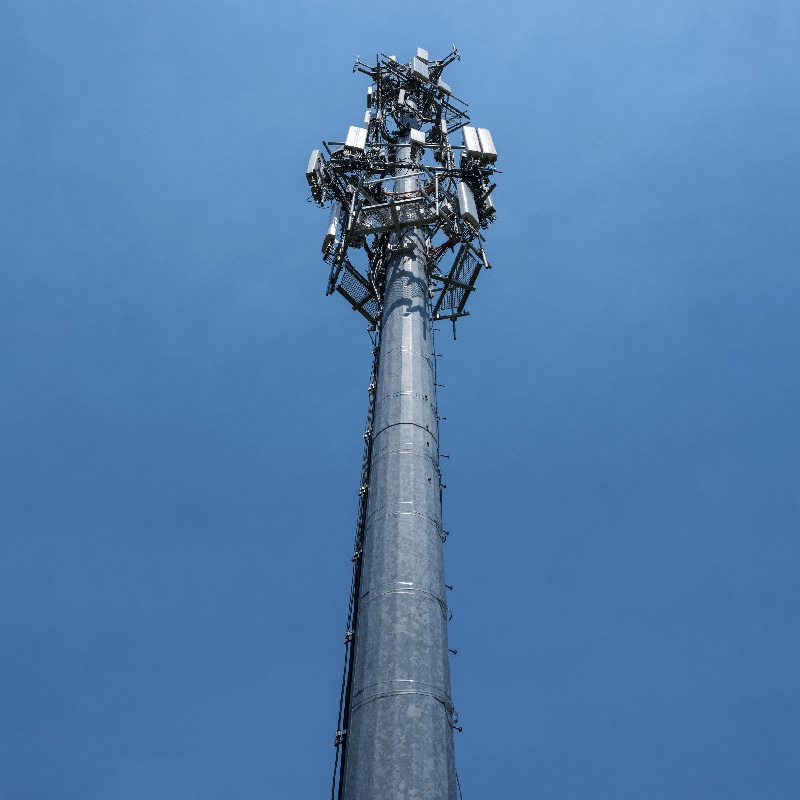
There are nearly 419,000 cell sites across the US, according to the newest figures from CTIA. The trade association recently published its annual survey of its wireless network operator members, a report that helps clarify and quantify some of the industry's regulatory issues.
"The nationwide rollout of 5G happened twice as fast as 4G, providing the physical foundation for our 5G economy," CTIA wrote in its report. "More wireless infrastructure is a big part of that successful launch as key federal infrastructure siting reforms continue to pay dividends by easing barriers to deployment. By the end of 2021, there were 418,887 operational cell sites across the nation. And that doesn't account for all the new 5G base stations added to existing cell sites."
Figure 1:  (Source: Phil Harvey/Alamy Stock Photo)
(Source: Phil Harvey/Alamy Stock Photo)
The association said that the US wireless industry collectively built almost 70,000 new cell sites between 2019 and 2021, up from the 42,000 sites constructed during the period from 2016 to 2018. The association attributed the increase to a relaxation of state and federal guidelines related to the construction of new cell sites.
"More cell sites enhance coverage, encouraging adoption and helping to close the digital divide," CTIA argued.
Regulatory pressures
A wide range of players across the US wireless industry – from network operators to cell tower owners to network equipment vendors – have cheered recent federal and state regulations designed to make it easier and faster to construct big, macro cell towers as well as small cells. They have argued that such regulations are important for the expansion and maturation of the US wireless industry, as well as the broader US economy.
Indeed, according to CTIA, US wireless providers invested $35 billion in 2021 into growing, improving and running their networks.
However, some cities and counties across the country have fought against such regulations, arguing that local regulators should have more control over the terms and conditions surrounding cell site construction. But a lawsuit along those lines was ultimately unsuccessful.
Nonetheless, some big players in the market continue to struggle with the regulations and permits required to build new cell sites. For example, Crown Castle CFO Dan Schlanger recently said that the company's small cell business is often dragged down by "the time it takes to get all of the things in place, mostly permitting, zoning and utilities in order to build that small cell."
Crown Castle is one of the nation's biggest cell site operators. The company counts more than 40,000 macro cell towers and 115,000 operational small cells or ones under contract. Meantime, SBA Communications counts around 30,000 cell towers across North and South America, while American Tower has about 43,000 cell towers in the US.
Other major cell tower owners in the US include Vertical Bridge and Harmoni Towers. Such companies typically own cell towers – dubbed vertical real estate – and then rent space on those towers to companies like Dish Network, AT&T, Verizon and other network operators.
It's worth noting that the US cell site industry has been eclipsed by those in other, bigger markets. For example, one estimate counts a total of 1.43 million 5G basestations in China. There are around 1.4 billion people who live across China's 3.7 million square miles – far more than the 330 million people across 3.7 million square miles in the US.
Related posts:
— Mike Dano, Editorial Director, 5G & Mobile Strategies, Light Reading | @mikeddano
About the Author(s)
You May Also Like












